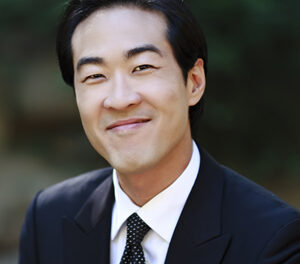Q. How do you present a chamber music program that contains four selections – one each for French horn, arpeggione, viola and clarinet (all with pianoforte accompaniment) – when only two musicians are available?
A. You call on Miles Hoffman, viola, and Fabio Parrini, piano, to come up from the South Carolina foothills to make music in Hendersonville.
And it works, using transcriptions of the three works not written for viola.
You will have heard Hoffman’s name on NPR, where from 1989 to 2002 he appeared regularly on “Performance Today” and since 2002 has been Music Commentator for NPR’s “Morning Edition.” You may not have realized that he is artistic director of the Peace Center’s “Peace Chamber” program in Greenville, SC and was for several years Dean of the Petrie School of Music at Converse College in Spartanburg. If you follow local concert events, you will also be aware of Parrini, who is chair of the piano department at North Greenville University, and who appears often in collaborative events.
On Sunday afternoon at the First Congregational Church of Hendersonville, these two musicians presented the four works in question as part of the Hendersonville Chamber Music series.
First up was Robert Schumann’s Adagio and Allegro, Op. 70, originally written for French horn. In Schumann’s writings, he frequently commented on the two sides of his personality, and even gave them names. Eusebius (named after a fourth-century saint) was his quiet reflective side, while Florestan (named after Beethoven’s hero in Fidelio) was his impulsive fiery side. In this piece, the movements could have been called Eusebius and Florestan instead of Adagio and Allegro. Parrini was impressive in his voicing in the quiet slow movement, both musicians shone in the vigorous Allegro, and the brief quiet time between movements was exactly the correct duration to delineate a boundary but also to bind the two disparate movements together. We don’t always praise the sound of silence as much as we should when a well-thought caesura enhances the worth of a performance.
The arpeggione was a six-stringed fretted instrument held and bowed like a viola da gamba or cello. It was popular for about a decade and already out of favor when Franz Schubert wrote the only notable piece for it, his Sonata in A minor for Arpeggione and Piano, D 821. This piece is now in the active repertoire for both cellists and violists. In the first movement Allegro Moderato, the viola is called on to go through many changes in mood, and we are reminded of Schubert lieder in the way the viola and piano are both essential, and play off each other. The remainder of the work (Adagio, Allegretto) is played without a break. The Adagio features long smooth sustained lines for the string instrument contrasted with repeated notes on the piano, which of course does not sustain a tone as long as can a string or wind instrument. The effect is unity. The Allegretto is the only section of the work that perhaps would sound better on the arpeggione, since it includes plucked strings and double stops that presumably take advantage of the arpeggione’s similarity to a guitar.
Ernest Bloch’s Meditation and Processional was the one work on this program that was originally composed for the viola and piano. Like most of Bloch’s music, it has its roots in liturgical Jewish music, particularly the “Meditation.” There was an effective use of canon structures (or counterpoint that was canon-like) to signify a meditation leader (the viola) and a congregation (the piano).
Johannes Brahms came out of retirement to compose several works that include clarinet. The final work on this program was his Sonata in E-flat, Op. 120, No. 2, originally and successfully written for clarinet and piano and in this case played on viola and piano. The substitution works better in the first two movements (Allegro amabile and Apassionata ma non troppo Allegro) and not so well in the final movement Andante con Moto. In that movement, I missed the characteristic timbre of a clarinet, but then I studied clarinet for five teenage years and may be prejudiced.
The pianist had his work cut out for him throughout this sonata, since Brahms wrote dense inner voices, not a note of which can be omitted without sounding incomplete. It is as though Brahms the expert orchestrator is making the pianist perform a full orchestration that is inevitable and that cannot be given short shrift. Parrini was up to this difficult challenge. Coupled with a fine performance by Hoffman on viola, the Brahms was a collaborative effort of the first order.












